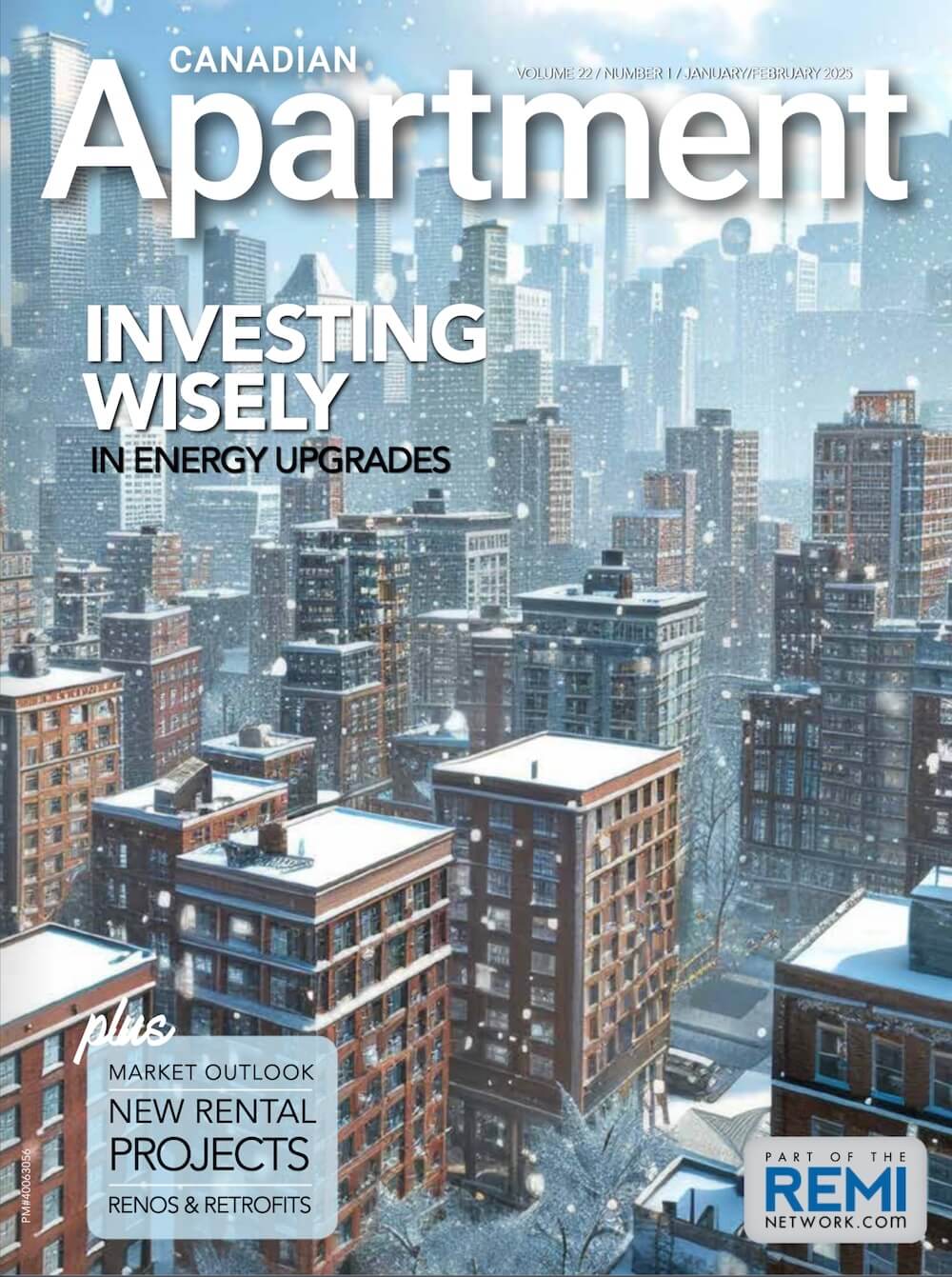Fire researchers at the National Research Council (NRC) recently completed a six-year study that provides a better understanding of how fires develop and spread in multi-suite residential buildings of lightweight frame construction. The results show that fire development and severity varies within a residential building, and is dependent on fuel load characteristics, ventilation and geometric dimensions of various living spaces within a dwelling.
The project focused on fires that can occur in apartments, semi-detached houses, duplexes, row houses, secondary suites and residential care facilities since these have a potentially greater impact on adjacent suites. Researchers conducted 14 full-scale tests at the NRC burn hall, investigating a variety of realistically furnished living rooms, bedrooms and kitchens in order to study the resulting fires.
The project was undertaken because (for these types of buildings) there is a lack of realistic simulated fire types, known as design fires, which are required in engineering-based methods of analysis that are increasingly used to solve fire safety problems. A design fire is essentially a quantitative description of the characteristics of a fire – rate of release of heat energy, size of the fire and its rate of spread, yield of products of combustion and hot gas temperatures. They are based on fire scenarios that replicate real fires.
Flashover
During testing, flashover – a phenomenon that results in a fire becoming a conflagration – generally occurred in less than five minutes. It occurred in as little as 140 seconds in fires started with a strong flame in highly combustible furnishings such as sofas and beds. At flashover, all exposed surfaces of combustible materials are ignited owing to elevated room temperatures exceeding a critical value of approximately 600 C. Following flashover, the potential for a fire to cause damage and fatalities in adjacent rooms and suites is greatly increased. Temperatures as high as 1,100 C to 1,200 C, occurring shortly after flashover and lasting for up to 30 minutes, were recorded.
These findings indicate the dangers arising from rapidly developing fires in buildings that are densely populated, since occupants cannot survive beyond flashover. The fire endurance of assemblies at such elevated temperatures (1,200 C) can be half the prescribed value that is based on lower temperature profiles prescribed in existing standard tests.
The one test incorporating a residential sprinkler system revealed a rapid extinguishment of the fire. The sprinkler activated within 50 seconds and the temperatures did not exceed 120 C. A fire starting in a oil-filled pot on the stove, in a layout simulating a main floor with a kitchen and living room, developed much more slowly (nine minutes to flashover) than one where the fire originated in a sofa in the same main floor configuration (three minutes to flashover).
Another main conclusion was that primary bedrooms result in the most severe fire conditions since they contain the greatest amount of combustible materials.
Researchers completed a detailed analysis of the results and identified features of the fires to form the basis of a computation model. Designers and code authorities can draw upon this huge volume of data to get a better understanding of the impact of the fires on various aspects of a dwelling.
The results provided quantitative information on combustible contents in residential dwellings, rates of fire growth and duration of the intense period of the fires. As well, commonly available calculation methods for determining variables such as time to flashover, maximum heat release rate supported by a given window size, peak temperature and fire duration were evaluated against the test data and recommendations were provided where improvements were needed.
Researchers will apply the results by working with industry and code authorities to provide guidance and improved methods of calculating key fire properties such as temperature. This project shows how NRC expertise and first class research facilities, combined with the input of industry and government representatives, can produce authoritative outcomes based on realistic experiments.
A potential next phase of the project is being developed to look at other types of buildings such as highrise apartments, and to quantify the contribution of combustible structural fuel loads.
Claudine Laforce is the publications editor, construction, at the National Research Council Canada.







